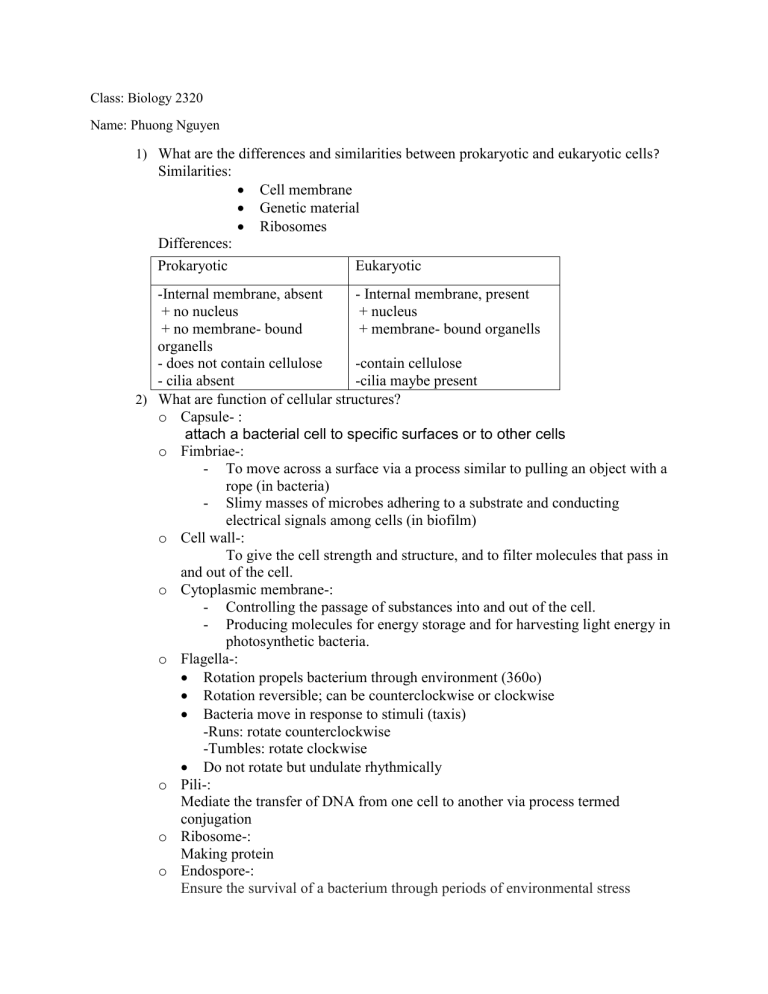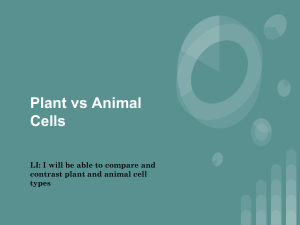
Class: Biology 2320 Name: Phuong Nguyen 1) What are the differences and similarities between prokaryotic and eukaryotic cells? Similarities: Differences: Prokaryotic Cell membrane Genetic material Ribosomes Eukaryotic -Internal membrane, absent - Internal membrane, present + no nucleus + nucleus + no membrane- bound + membrane- bound organells organells - does not contain cellulose -contain cellulose - cilia absent -cilia maybe present 2) What are function of cellular structures? o Capsule- : attach a bacterial cell to specific surfaces or to other cells o Fimbriae-: - To move across a surface via a process similar to pulling an object with a rope (in bacteria) - Slimy masses of microbes adhering to a substrate and conducting electrical signals among cells (in biofilm) o Cell wall-: To give the cell strength and structure, and to filter molecules that pass in and out of the cell. o Cytoplasmic membrane-: - Controlling the passage of substances into and out of the cell. - Producing molecules for energy storage and for harvesting light energy in photosynthetic bacteria. o Flagella-: Rotation propels bacterium through environment (360o) Rotation reversible; can be counterclockwise or clockwise Bacteria move in response to stimuli (taxis) -Runs: rotate counterclockwise -Tumbles: rotate clockwise Do not rotate but undulate rhythmically o Pili-: Mediate the transfer of DNA from one cell to another via process termed conjugation o Ribosome-: Making protein o Endospore-: Ensure the survival of a bacterium through periods of environmental stress 3) What are the types of bacterial flagella distribution? - Monotrichous - Amphitrichous - Lophotrichous - Peritrichous 4) What are the differences and similarities between cell wall structure of G+ and Gbacteria? - Similar: both have cytoplasmic membrane and Integral protein - Differences: Gram-positive Gram-negative + Cell wall has thicker layer of peptidoglycan +Lipoteichoic acids that anchor the wall to the cytoplasmic membrane + Cell wall has a thin layer of peptidoglycan + An outer membrane composed of lipopolysaccharide, phospholipids, and proteins.


